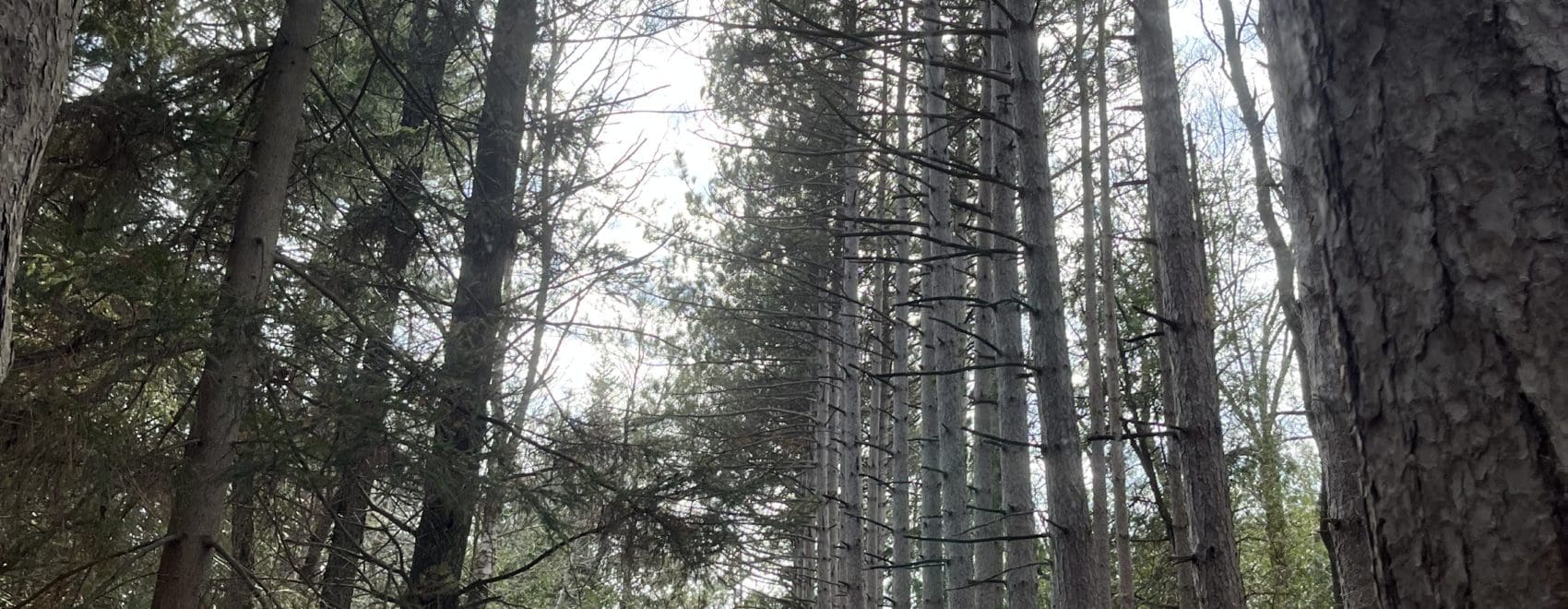Written by summer intern Maria Kraynek, Photo by Jessica Johnsrud

Growing up, I was always fascinated by trees. Their strong yet overlooked presence in our world continues to amaze me as they work as wildlife habitats, air filters, and so much more. With an estimated 60,065 tree species globally, pine trees make up only a small fraction of that. One of the most well-known tree species around the world, pines, are conifers, meaning they bear cones and have needle or scale-like leaves. They can be found on every continent except Antarctica with the greatest concentrations being in Asia, Europe, and North America. Though many pine tree species can be found in Wisconsin, there are only three Wisconsin-native variants, those being Jack pine, Red pine, and White pine.
Jack Pine (Pinus banksiana) is a softwood commonly used for lumber and pulpwood. It can be identified by various features such as needles, cones, and bark. For instance, Jack Pines have fairly short needles reaching about 2-4 cm, making them distinguishable amongst the two other native species. They are stiff and come in clusters of two along the branch. With that, Jack pines also have smaller cones, measuring about 3-5 cm long and coming to a curved tip. Its bark is a reddish-brown color and is scaly in a sense, helping protect it from insects and fires.
Red Pines (Pinus resinosa), have much longer needles, measuring around 10-16 cm. These needles also grow in bundles of two but are brittle and will snap when bent. Red pines have smaller, round cones, similar in size to that of the Jack pine. Their bark is also scaly and a reddish-brown color making their needles the best identification point between Red and Jack pines.
Lastly, White pines (Pinus strobus), are arguably the most distinguishable out of the Wisconsin-native pines. They have longer needles similar in length to that of the Red pine, but White pine’s needles are bendy, not brittle. White pines also have very long cones (about 15-20 cm) that are cylindrical in shape. In younger trees, the bark is smooth with a grayish-green color, but as the tree ages, it develops furrows and a grayish-brown appearance.
All three of Wisconsin’s native pine species are beautiful, unique trees that can be spotted throughout Woodland Dunes’ properties. Conifer Trail, specifically, has all three. The next time you’re out hiking the trails and spot a pine, see if you can identify it!

